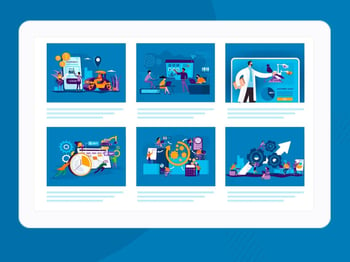Part of the Beyond Transformation series
By Simon Heeringa, Regional Sales Manager, Q2 ANZ
Customer experience (CX) has long been a hot topic the world over. And well before the pandemic, businesses were committed to improving CX.
Employee experience, however, is a more recent focus, and there is an important overlap between the two. Employee experience creates a more engaged employee, which is key to providing the best CX. As Richard Branson says, “Loyal employees in any company create loyal customers, who in turn create happy shareholders.”
But you can’t create great employee or customer experiences without engaging them. Finding out what is important to them is the first step, and the conversation must be continuous, actionable, and if changes are implemented, reported on. The data gained forms the structure from both an employee and customer experience viewpoint.
Focus on your staff
According to Jacob Morgan, author of The Employee Experience Advantage, companies that invest in their employees are 4x more profitable than ones that don’t. Traditionally, employee experience for many companies has been focused on the office environment, onboarding, added extras, and transparency. The world of work has had a shake-up over the last twelve months and additional factors now apply to their experiences. Clients are looking at a decentralised and democratised workplace. Key ‘asks’ that Q2 sees are:
- Feedback – Employees want to give and receive feedback and be confident it’s heard, acknowledged, and acted on. They want their voice to matter.
- Opportunities – Staff want to understand their opportunities for professional development and the reciprocation of the loyalty and commitment the company expects from them.
- Technology – Technology should enable them to perform their jobs better so that they can concentrate on customers. No-one wants to give bad CX, but legacy technology sometimes forces this outcome.
- Working remotely – This is no longer on an ‘exception-basis.’ If you don’t offer it, you are behind in these changing times and your best people will demand it or leave.
WFH is here to stay
Working from home (WFH) has become one of the top criteria when considering an employer. A recent FlexJobs survey found that 65% of respondents want to be full-time remote workers post pandemic, with an additional 31% wanting a hybrid work environment. All told, that‘s 96% indicating a remote preference.
Employees who use advanced customer experience programs have been able to adapt to working from home as a result of their company’s investment in technology. These are the companies that have thrived through the pandemic.
Streamlined technology allows employees a complete customer view in one location. From the employee experience perspective, they can provide the customer with the best data-driven solutions for their personal circumstances in a faster timeframe. This reduces administrative “thrash” so they can spend more time helping customers. It gives their work more meaning, ultimately leading to greater job satisfaction. Knowing that their company has invested in technology that helps them to perform their role is proving to be a key requirement for engagement.
Center on experience
Great CX is keeping them at the center of everything you do, from engaged employees, to technology and data. Your staff deserve the same experience to avoid the client being better informed about their relationship with the FI than they are. If your customer is self-serving online, a data-driven platform will provide them with a seamless experience when and where they want. The same data access needs to be available to your staff to provide a delightful and streamlined experience regardless of channel. New businesses can design the customer and employee experience from scratch, but existing financial services organisations are often working with siloed legacy systems, which complicates the mission.
Many businesses have enhanced online CX with a customer interface built on top of their legacy systems. The result may be an improvement, but not best-in-class CX, as they’re not removing the layers of siloed processes. The pandemic has shone a light on those that have taken this approach and exposed the limitations in their offerings.
Now, more than ever, harnessing technology and data are critical for the financial services industry. In the post-pandemic data-driven world, companies must be intentional about both customer and staff experience. It is the only way to ensure success moving forward. It starts with being thoughtful and identifying the correct tools to facilitate the mission. This is how you remain competitive and meet the challenges in your future.
These insights will help as you consider employee experience for your digital lending transformation and beyond.
Learn more about Q2 and our approach to digital lending by visiting our Beyond Transformation web site.




